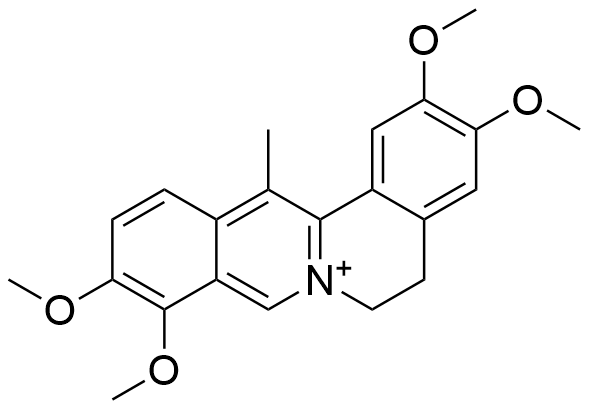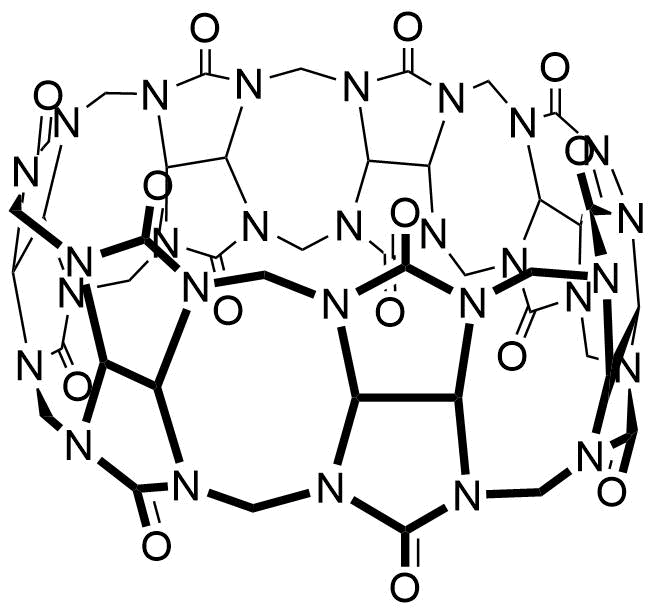Binding Properties
| 𝜈 | Molecule 1 : 1 Host | ||
| Ka = | 3.04⋅104 | ± 600.0 | M-1 |
| Kd = | |||
| logKa = | |||
| T | 25.0 °C | ||
| Energy | kJ mol-1 | kcal mol-1 | |||
|---|---|---|---|---|---|
| ΔG | = | -25.59 | ± 0.05 | -6.12 | ± 0.01 |
These are the specifications of the determination of the experimental results.
| Detection Method: | Direct | |||
| Assay Type: | Direct Binding Assay | |||
| Technique: | Fluorescence | |||
| 𝛌ex | = | 350.0 nm | ||
| 𝛌em | = | 476.0 nm | ||
| Ibound⁄Ifree | = | 5.8 | ||
Detailed information about the solvation.
| Solvent System | Complex Mixture | |
| Solvents | water | |
| Additives | LITHIUM CHLORIDE | 400.0 mM |
| Total concentration | 400.0 mM | |
| pH | 7.2 |
Please find here information about the dataset this interaction is part of.
| Citation: |
C. Li, J. Li, X. Jia, SupraBank 2025, Selective binding and highly sensitive fluorescent sensor of palmatine and dehydrocorydaline alkaloids by cucurbit[7]uril (dataset). https://doi.org/10.34804/supra.20210928148 |
| Link: | https://doi.org/10.34804/supra.20210928148 |
| Export: | BibTex | RIS | EndNote |
Please find here information about the scholarly article describing the results derived from that data.
| Citation: |
C. Li, J. Li, X. Jia, Org. Biomol. Chem. 2009, 7, 2699. |
| Link: | https://doi.org/10.1039/B820852B |
| Export: | BibTex | RIS | EndNote | |
Binding Isotherm Simulations
The plot depicts the binding isotherm simulation of a 1:1 interaction of Dehydrocorydaline (0.0006578947368421052 M) and CB7 (0 — 0.0013157894736842105 M).
Please sign in: customize the simulation by signing in to the SupraBank.




